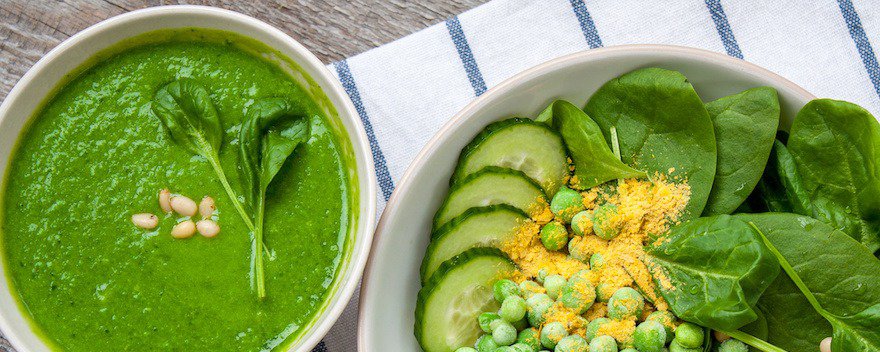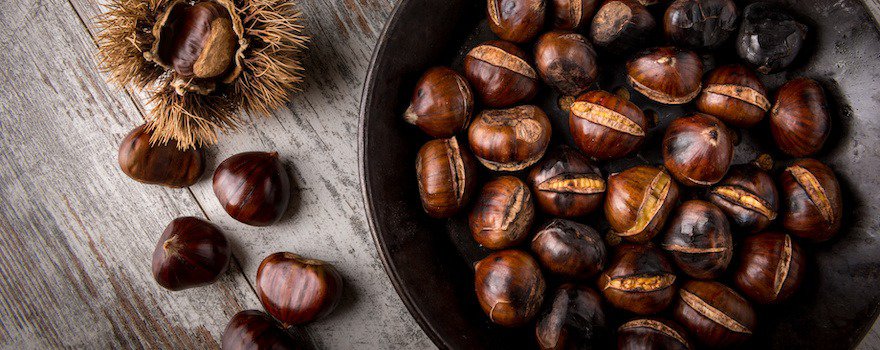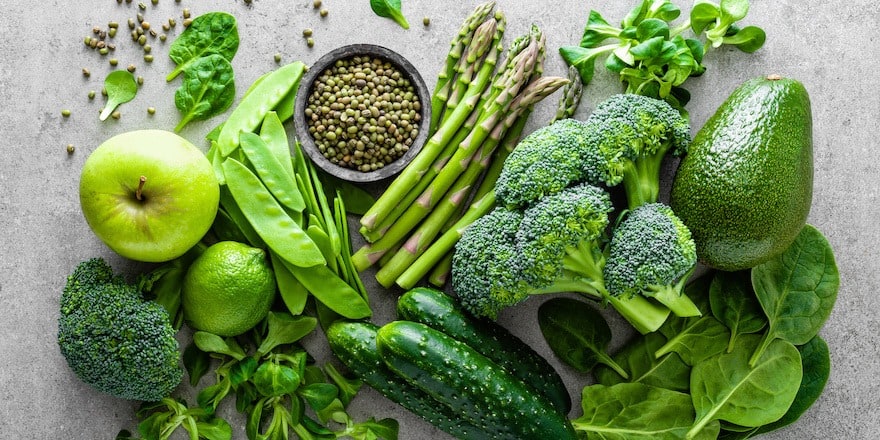What is it?
Folic acid, a vitamin belonging to the B group, is associated with several names. It is also called folates or vitamin B9. This substance is present in large quantities in leafy vegetables, spinach, watercress, green beans, as its etymology indicates.
Indeed, the terms folates and folic come from the Latin word folium, translated as the word “leaf”. Its intake is mainly provided by the diet.

The vitamin B9 is involved in cell renewal. Its effect on fetal development and its benefits during pregnancy are well recognized.
Specialists recommend that women of childbearing age and those wishing to have a child ensure sufficient daily intake of folic acid.
Indeed, during the first trimester of pregnancy, folic acid contributes to the formation of the fetal nervous system and, more specifically, to the closure of the neural tube. It contributes to the maintenance of general health during childhood and adolescence.
The benefits of folic acid
Prescribed to women who have planned their pregnancy (intake started two months before stopping contraceptives), folic acid performs several functions within the body:
- Intervient dans le processus de renouvellement des acides aminés et la production d’ADN.
- Participe à la synthèse des cellules qui se renouvellent rapidement, comme les cellules cutanées, intestinales, les cellules des globules blancs ou des globules rouges.
- Stimule la croissance au cours de l’enfance et l’adolescence.
- Améliore la cicatrisation des tissus.
- Renforce le système immunitaire.
- Entre en jeu dans le cadre du bon fonctionnement cérébral, notamment du système nerveux, au niveau de la synthèse de plusieurs neurotransmetteurs.
- Au cours du premier trimestre de grossesse, intervient dans la formation du système nerveux fœtal et plus particulièrement au niveau de la fermeture du tube neural.
- Au cours de la grossesse, participe à la croissance des tissus maternels (flux sanguin, accroissement de l’utérus).
- Selon certaines études, l’acide folique permettrait de prévenir certains cancers (cancer du sein, du côlon, de l’estomac, du pancréas et du poumon). Cette fonction reste à démontrer.
Note: specialists recommend taking folic acid to prevent fetal malformations during pregnancy.
Symptoms of deficiency
Folic acid deficiencies can be attributed to inadequate dietary intake, impaired absorption due to medication, or malabsorption (digestive disease).
Because of its functions, folic acid deficiencies will cause typical symptoms such as:
- L’anémie macrocytaire : les globules rouges sont trop volumineux
- Des troubles dépressifs
- Des troubles cardio-vasculaires
- Une augmentation de la tension artérielle
- De l’arthrite
- Des troubles digestifs (nausées, vomissements, diarrhées)
- Des troubles neurologiques, états psychotiques
- Chez les femmes enceintes, les conséquences des carences en acide folique peuvent être graves : accouchement prématuré, croissance du fœtus retardée, malformation du système nerveux fœtal comme le spina bifida (absence de fermeture du canal osseux postérieur ou colonne vertébrale) ou l’anencéphalie (absence de fermeture du tube neural).
Recommended daily intake
The folic acid requirements are easily met by adopting a varied and balanced diet.
Daily needs are, however, higher in overweight individuals, children, and, of course, pregnant women:
- Bébé de 0 à 1 an : 70 µg/jour
- Enfant âgé de un à 3 ans : 100 µg/jour
- Enfant âgé de 4 à 6 ans : 150 µg/jour
- Enfant âgé de 7 à 12 ans : 200 à 250 µg/jour
- Enfant âgé de 13 à 15 ans : 300 µg/jour
- A partir de 16 ans : 330 µg/jour
- Femme enceinte ou qui allaite : 400 µg/jour
Additional information: as the needs for vitamin B9 are much greater during pregnancy, specialists from the French Agency for Food, Environmental and Occupational Health and Safety (Anses) recommend supplementation with folic acid during pregnancy, at a dose of 400 µg/day (from two months before the start of pregnancy until the end of the first month of pregnancy).
It’s best to discuss with your primary care doctor, your gynecologist, or your midwife before taking any medicinal supplements.
Top 5 foods containing folic acid
A balanced diet (meats, fruits and vegetables) can ensure sufficient daily intake of folic acid. Here are five foods rich in vitamin B9.
1. Liver

Cod, veal or lamb liver contain between 155 µg and 330 µg of folic acid per 100 g of meat. They are therefore nutritionally beneficial.
Veal and lamb liver can be served well cooked as part of the two main meals, accompanied by green vegetables and starchy foods such as whole grains or potatoes. As a precaution, however, it is not recommended to consume them during pregnancy.
2. Green vegetables

Green vegetables fit perfectly into the everyday diet. Peas, green beans, salads (lamb’s lettuce, watercress), and spinach are rich in folic acid.
They are low in calories, so people with a large appetite can consume them in large quantities.
Boiled or steamed, they make excellent accompaniments for meats and fish. They can also be eaten in salads, as a starter, or included in main dishes (mixed salads).
Attention: folic acid is a water-soluble vitamin. It leaches into cooking water. For better intake, favor steaming or choose foods that can be eaten raw.
3. Eggs

Eggs are a source of protein. Athletes understand this well and consume them regularly. Eggs are also a significant source of folic acid.
A hard-boiled egg provides 106 µg of vitamin B9 per 100 g. You can therefore eat one each morning to have regular intakes of folic acid. Depending on taste, eggs can be eaten fried, soft-boiled, or as an omelet.
Good to know: it is recommended not to eat more than five eggs per week. Indeed, egg yolks are high in cholesterol.
4. Melon

Melon is an ideal fruit during hot weather. Mostly made up of water, it is a refreshing food that contributes to daily hydration.
Generally served as an appetizer, it can be eaten as is, cut into small pieces, with mozzarella or prosciutto. It can also be used to make an excellent fruit salad for dessert or as a snack!
5. Chestnuts

Chestnuts are traditionally picked or gathered in the fall. Chestnuts contain 120 µg of folic acid per 100 g of food. Enough to make a very nutritious snack.
Chestnuts can be boiled or roasted over a wood fire. For optimal vitamin B9 intake, favor boiling. They also make an interesting ingredient for a unique purée.
To accompany chestnut purée, choose grilled red meat, game, or poultry (chicken, turkey). It also makes a good stuffing for Christmas roasts.
Worth knowing: brewer’s yeast is the supplement that contains the highest amount of folic acid. With a content of 2,500 µg/100 g, it is a valuable nutrient to supplement folic acid intake in cases of deficiency or malabsorption.
Regarding storage, it’s useful to know that folic acid is sensitive to heat, light, and air. It is therefore recommended to store the foods fortified with folic acid away from light in a cabinet dedicated to this purpose.
Risks, side effects, and folic acid overdose
According to experts, the recommended upper limit for folic acid is about 1 mg/day. Beyond this limit, the body may have an excess of folic acid that can cause varying degrees of neurological disorders.
It is therefore important that supplementation with vitamin B9 be carried out under medical supervision to avoid the occurrence of adverse effects.



